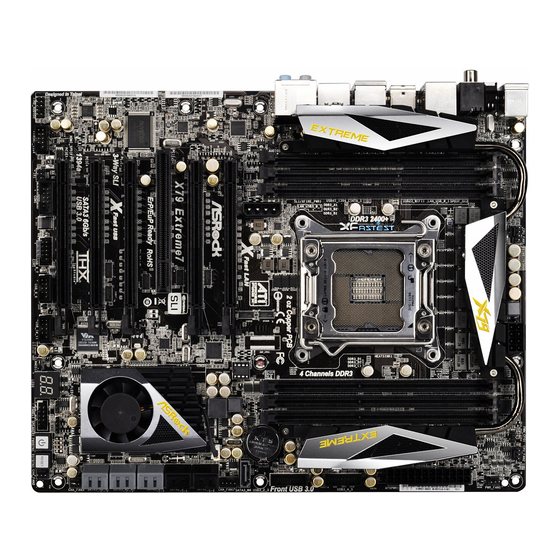Advertisement
Quick Links
Download this manual
See also:
Quick Manual
Marvell SATA3 RAID Installation Guide
Overview
The Marvell RAID Utility (MRU) is a browser-based graphical user interface (GUI)
tool for the Marvell RAID adapter. It supports IO Controllers (IOC) and
RAID-On-Chip (ROC) Controllers. RAID technology allows you to create arrays and
virtual disks using one or more physical disk drives in combination in order to
achieve increased disk fault tolerance and improved performance.
The Marvell RAID adapter supports the following RAID levels:
• RAID 0 (striping). Multiple drives can read and write data in parallel to increase
performance.
• RAID 1 (disk mirroring). Two disks mirrored to each other.
1
Advertisement

Summary of Contents for ASROCK MARVELL SATA3 RAID
- Page 1 The Marvell RAID adapter supports the following RAID levels: • RAID 0 (striping). Multiple drives can read and write data in parallel to increase performance. • RAID 1 (disk mirroring). Two disks mirrored to each other.
-
Page 2: Installation
Installation Insert ASRock support CD to the optical drive. Click “Install all” or “Marvell SATA3 Driver”. The system will start to auto-install Marvell SATA3 driver. Click “Next” at the welcome screen. - Page 3 The End User License Agreement (EULA) window appears. Read the EULA. Select “I accept” and click “Next” to continue. Select the options you want for custom installation. Click “Next”.
- Page 4 Choose Install Location window appears. For an alternative location, click “Browse”, and then select your desired location. Click “Install”. The software has been installed to your system. Click “Finish” to close the wizard.
- Page 5 Restart your system. You will find the “Marvell RAID Utility” icon on the Windows task bar.
- Page 6 Launching the MRU in the Browser After installing your MRU software, you can access and control both local and remote adapters using the browser GUI. For remote access, you need to know the IP address of the system with the remote adapter.
- Page 7 GUI on Windows. You can use the desktop shortcut and the system tray icon to launch the MRU in your default browser. When launched, your default browser opens and displays the MRU login page.
-
Page 8: Login Screen
Login Screen When you first start the MRU, you are prompted for a username and password. MRU user accounts and their permissions follow the OS user accounts and their permissions. Only user accounts with administrator privileges have access to all permissions. Non-administrator users have view-only permissions. -
Page 9: Create Raid
Create RAID Click “Operation”. Click “Create VD”. Double-click the HDDs that you want to create RAID. Select the RAID level. - Page 10 Key-in the RAID name. Click “Submit”. RAID function is created successfully. You can see the information on this page.
- Page 11 For the further information or questions, please click the “Help” icon the right-top of the screen.
- Page 12 First of all, you need to make a SATA3 driver diskette. Press <Ctrl>+<M> during the POST to enter Marvell BIOS Setup screen. In Marvell BIOS Setup screen, select free disks to create array and continue to create virtual disk on this array. Press <Enter>.
- Page 13 Use space bar to select the free disks to be used in the array. Press <Enter>. Select the RAID level. Press <Enter> to confirm.
- Page 14 The pop-up message will ask if you want to create this virtual disk. Choose “Yes”. Then below screen appears.
- Page 15 In the exit message, the system will ask “Do you want to exit from Marvell BIOS Setup?” Choose “Yes”. You will see the information of RAID you create. Here we take RAID 1 for example. The Status shows “Functional” now, which means RAID 1 is created successfully.
- Page 16 For example, assuming you have a two disk RAID 1 array, and one of the drives fail, then you need to replace the failed drive with a new one, and rebuild the array to re-generate the lost data on the newly added drive.






